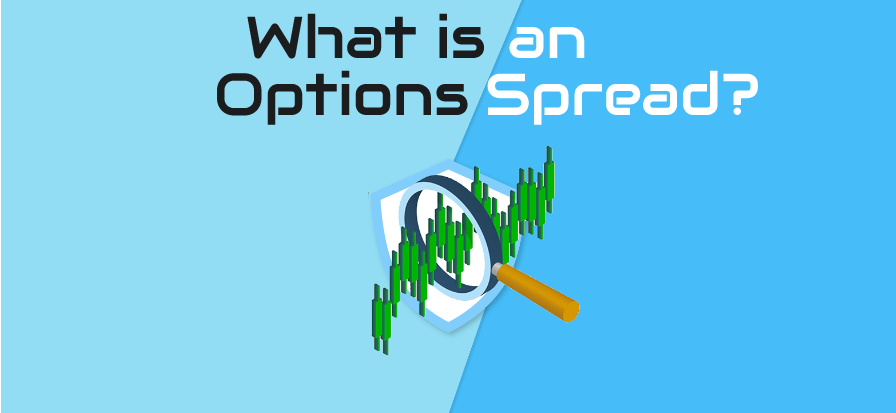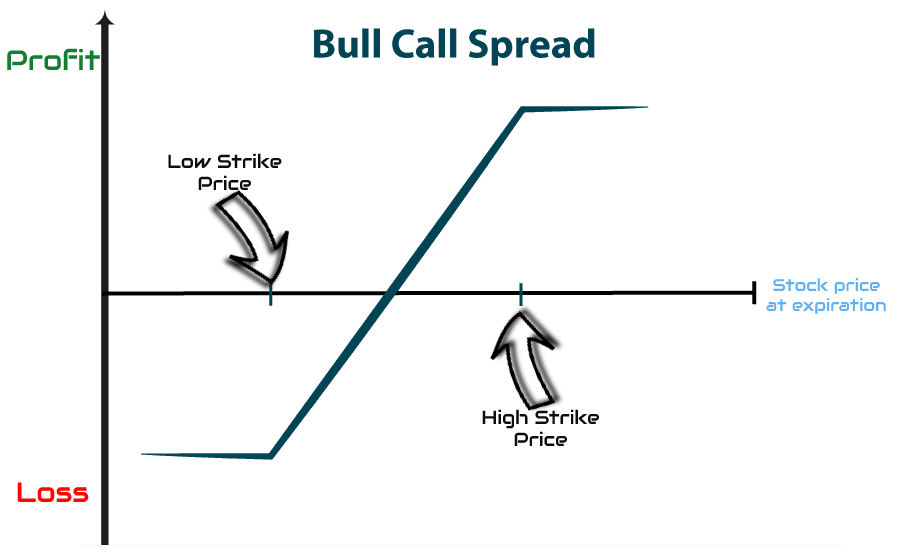This option spreading strategy will help you overcome the limits of your exposure to risk and overcome the fear of loss. This practical guide will share examples of powerful Box spread option strategies. We cover the basics of bull call spread option strategies to help you hedge risk and increase your odds of making a profit.
If this is your first time on our website, our team at Trading Strategy Traders welcomes you. Make sure you hit the subscribe button, so you get your Free Trading Strategy every week straight into your email box.
With spread trading options, it’s important to understand the math behind it. The biggest “AHA!” the moment in your options trading career will be when you understand how spread options work. Option spread trading strategies provide a great opportunity to improve your bottom line. Get started by reading our selection of PDF spread strategies.
Open options trading on the Robinhood App and start buying spread options cheaper, with no commissions using: Robinhood App Trading Guide (Everything You Need to Know) . This is one of the easiest places to start trading options for free.
We will break down the intro to spread options and will explain how to become a successful options trader.
Spread option trading is the act of buying and selling the same type of option simultaneously. There are two types of options: Call options and Put options. A call option gives the right to buy at a future date. Put options give you the right to sell at a later date. For example, if you buy a call option on Amazon stock and at the same time sell another call option on Amazon stock, you have opened a spread trading position.
Typically, a spread consists of at least a two-leg order or a multi-leg option order such as a butterfly spread option strategy.
Option spreads can be confusing, but they are easy to understand if you have a complete options trading guide, which can be found here: Call Options vs Put Options – An Introduction to Trading Options.
The difference in either the expiration date or the strike price between the two options is called the spread.
Key takeaways when building a spread:
- Option combinations are based on the same underlying asset. For example, if you buy a call on Apple stock, you are also selling a call on the same Apple stock.
- You need to buy and sell the same type of option. For example, if you buy a Call option, you sell another Call option
- You can use various combinations of expiration dates and/or strike prices.
Let’s see what is the easiest combination of options to build a spread:
What is a Call Spread Option Strategy?
A call spread is a preferred strategy used when you believe the price of the underlying asset will rise. A call spread strategy involves buying an in-the-money call option and selling an out-of-the-money call option (higher strike price). Both options have the same expiration date.
Call spreading is also known as the male call spreading strategy. Engage in this strategy when the market looks bullish.
Option spreads will help you profit in any type of market conditions. You can deal with uptrends and downtrends.
For downtrends, we use a bear call spread trading strategy. Use this strategy when it looks like the price is likely to go down. A bear call spread is an option strategy that involves buying an in-the-money call option and selling an out call option (lower strike price). Both options have the same expiration date.
The bear call spread strategy is also known as the short call spread.

But what about when we are stuck in a captive market?
The spread option is the most flexible financial instrument. With the right options trading strategy, your portfolio can become more diverse and dynamic. You have your endless strike prices and expiration dates available so you can build complex calendar spread option strategies. Thus, spread options can be adjusted based on current market conditions, including side trading.
The spread option is a double edge sword. On the one hand, you limit the risk, but on the other hand the potential profit is also limited. An option spread will always create a limited price range to profit from.
More information on the different types of spreads is shown below:
Types of Spread Options:
In this segment, we will outline how many different types of options there are, and help you understand these concepts better. Option spreads can be classified into three main categories:
- Vertical spread option strategy.
- Horizontal spread option strategy.
- Diagonal spread option strategy.
1. Vertical Distribution Strategy
Vertical spreads are built using simple spreads. Vertical deployment is the preferred strategy that requires the following:
- Buying and selling options of the same type (Call or Put).
- Same expiration date.
- The same underlying asset.
- But, different strike prices.
On the option chain, this position appears vertically, hence the name spread name.
We can distinguish four types of vertical spread option strategies:
- Bull Call Spread Option Strategy
- Bear Call Spread Option Strategy
- Bull Put Spread Option Strategy
- Bear Put Spread Option Strategy
We will discuss the bull call spread as all others are based on the same technique and function. We can also go one step further and classify spreads based on the capital outlay (debit spread or credit spread) involved:
- A debit spread option strategy occurs when you are charged an upfront fee from buying the option.
- A credit spread option trading strategy occurs when you receive credit in advance of buying an option.
2. Horizontal Spread Option Strategy
Horizontal spread is the preferred strategy that requires the following:
- Buying and selling options of the same type (Call or Put).
- The same strike price.
- The same underlying asset.
- But, different expiration dates.
Horizontal spreads are also known as calendar spreads or time spreads because we have different expiration dates.
3. Diagonal Spread Option Strategy
The diagonal spread is an optional strategy that requires the following:
- Buying and selling options of the same type (Call or Put).
- The same underlying asset.
- But, different expiration dates.
- And different strike prices.
Horizontal spreads and diagonal spreads are both examples of calendar spreads. The calendar option spread is an advanced strategy that profits from both the option price breakdown and the difference between the month of the contract and the downward movement of the underlying stock. As stocks change in price over time, you will have many opportunities to make a profit.
Check out our sample spread options trading strategy HERE.
The bottom line is that you need to get familiar with all the different types of options. This will increase your chances of success.
Bull Call Spread Option Strategy
What is a bull call?
A bull call spread involves competing by buying in-the-money Calls and then selling out-of-the-money Calls with the same expiration date. The reason why we sell OTM (out-of-the-money) calls is to help fund ATM (at-the-money) calls. We know that ATM calls can be quite expensive, so this is a great way to reduce those costs at a price premium.
In options trading, the premium is the upfront fee you pay when you buy a call option. When you sell a call option, the investor receives a premium. Therefore, by selling your second OTM call option you are essentially offsetting some of the price you paid for the first ATM call option.
The premium can be very expensive if the option’s strike price is close to the current stock price.

How to profit from a bull call spread?
As the name suggests (BULL call), you profit from the bull call spread if the underlying asset will go up in value. Market sentiment needs to be higher.
Bull + Call = Bull represents the market going higher + Call represents the option you buy if you think the market will go higher.
A key element of the male call spread is the assumption that the market price will rise.
What is the maximum risk associated with a bull call spread?
The maximum loss you can incur in a bull call spread is the premium price you paid for the option plus fees. Potential losses will always be known before you enter the trade.
Now, what is the maximum profit you can make from a spread option trading strategy?
The profit can be calculated by taking the difference in the strike price (ATM call and OTM call) minus the maximum risk, which we calculated earlier.
Bull Call Spread Option Profit = Strike Price – Maximum Risk
Let’s look at a quick example, so we can practice the theory of option trading.
For this example, we’ll go with the Apple stock option price.
At the time of writing this option spread strategy PDF, Apple’s stock price is trading around $223 per share.
The first step to build your bull call spread is to buy an ATM call at $223. Second, because we think the APPL stock price will go higher, we sell an OTM call at let’s say $250. Our profit will be capped at $250.
For simplicity, let’s assume you pay $2 for an ATM call and receive $1 for selling an OTM call. The cost associated with this trade will only be $1 ($2 long call premium – $1 short call profit = $1 x by 100 contract size = $100).
The final cost of $1 is less than just going out and buying an ATM call, hence why we have the expression “limited risk”.
The right way to buy cheap options is to use the bull call spread options strategy. However, this option trading strategy is more suitable when you think the underlying asset will only increase modestly.
In the next segment, we take the box spread option strategy and create a practical example that produces a risk-free arbitrage opportunity.
Example of Option Spread Box (Long Box) Strategy

A box spread is a complex arbitrage strategy that takes advantage of price inefficiencies in option prices. When price spreads are less concerned in relation to their expiration value risk-free arbitrage trading opportunities are created.
The box spread option strategy is also known as the long box strategy.
Building a box spread option involves building a four-legged option trading strategy or combining two vertical spreads as follows:
- Buy a bull call spread option (1 ITM call and 1 OTM call).
- Buy a bear spin option (1 ITM spin and 1 OTM spin).
The short box option strategy is the opposite of the long box strategy.
The way you profit from box spread options and create a risk-free position is to use the same expiration date and strike price for the vertical spread. Although we eliminate the risk of spreading the box also has the disadvantage of producing only small returns.
Examples of scattered boxes
Let’s take a simple example of the Alibaba stock ticker symbol BABA trading at $180. The following option premium prices are available:
- October 175 call – $5
- October 185 call – $1
- October 175 put – $ 50
- October 185 – $5
To execute a box spread, investors need to buy both vertical spreads:
- Buy Bull Call Spread = Buy October 175 call + Sell October 185 call = ($ 5 x 100 size contract) – ($ 1 x $ 100 size contract) = $ 400.
- Buy Bear Put Spread = Buy October 175 puts + Sell October 185 puts = ($1.5 x 100 contract size) – ($5 x $100 contract size) = $350.
Excluding commissions, the total cost of opening a spread box is $400 + $350 = $750.
The closing value of the price spread is: $185 – $175 = $10 x $100 shares = $1,000.
Total profit excluding option fees is calculated as follows: $1,000 – $750 = $250.
If you use the wrong option trading Broker, the potential profit generated by the box spread can be offset by the large commission. Make sure you invest in options using the commission-free options trading platform Robinhood.
When to Use the Butterfly Spread Option Strategy?

The butterfly spread is a neutral trading strategy that can be used when you expect low trading volatility in the underlying asset. The butterfly spread uses a combination of the bull spread and the bear spread, but with only three legs. If you are trying to pass the time, a three-legged option strategy can be constructed as follows:
- Buy an in-the-money Call
- Selling two calls at-the-money
- Buy one out-of-the-money call
The risk of a long call butterfly is limited to the premium cost you pay to open a three-leg position. Butterflies can also be built by combining and selling a bridge and buying a piece.
Learn the art of trading target spread option strategies to catch the next big move: Straddle Options Strategy – Profiting from Big Moves.
The short butterfly strategy is a strategy that deals with the long butterfly.
Final Word – Option Spread Strategy
Although a stock trader needs 100% right to make a profit, the option spread strategy can make you money even if you are only partially right about your trade. Option spreads can help you develop a non-directional trading strategy such as the box option strategy example outlined in this option.
Many options traders begin their careers by simply buying puts or buying calls. But, at some point along with the evolution of option traders, they quickly switched to spread trading options. For example, implementing a bull option spread strategy will offer you better risk control.
For more trading strategy options and strategies follow: Top 10 Blogs and Websites to Follow in 2019.
Don’t forget selling trading options comes with many alternatives on how to manage risk. Nowadays, most options trading platforms make it easy to place complex options strategies at once. Give them a try on the demo options platform before you risk your own hard-earned money.
Thank you for reading!







